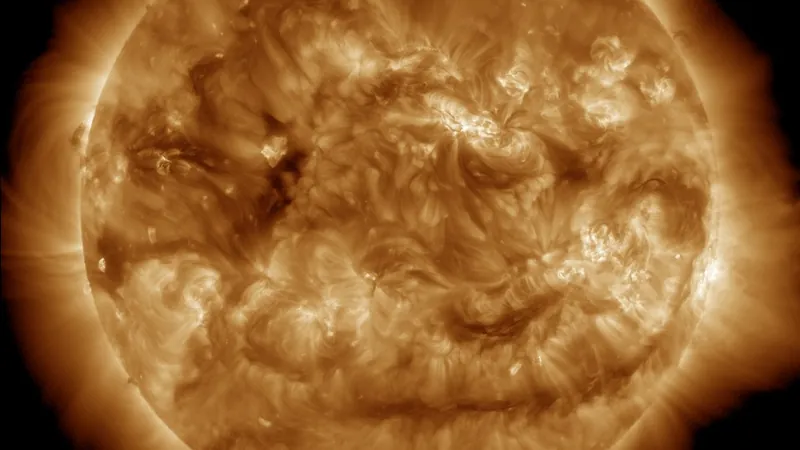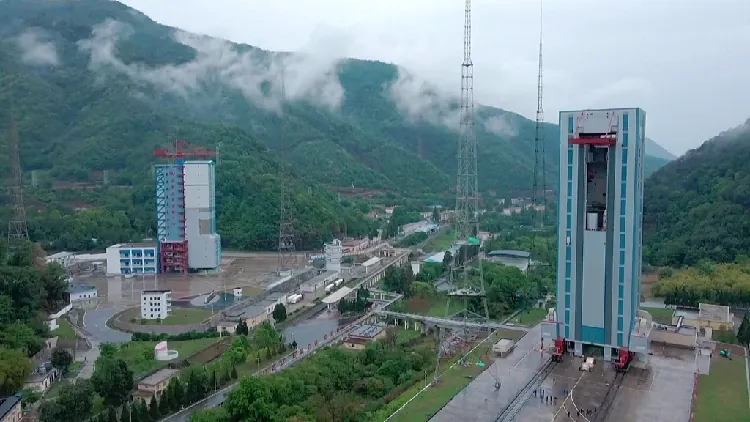
NASA's Solar Dynamics Observatory Resumes Operations After Data Center Flood
2025-01-10
Author: Charlotte
After a harrowing month filled with challenges, the NASA Solar Dynamics Observatory (SDO) is back online following a flood at Stanford University's data center that temporarily halted data processing for crucial solar research. Solar scientists are now regaining access to invaluable information and images sent back to Earth by SDO and its partner spacecraft, the Interface Region Imaging Spectrograph (IRIS).
In an update released on January 7, team members from the Joint Science Operations Center (JSOC) at Stanford announced, “We have begun processing most near-real-time SDO data products.” Fortunately, a restored database server is reported to be "functioning adequately," with backup systems on standby, allowing scientists to begin catching up on the data backlog created during the outage.
The catastrophe struck on November 26, when a burst pipe spewed water from the ceiling, leading to significant damage to around 20% of the lab's computer systems responsible for processing and distributing vital solar data. This incident rendered archives from two of SDO’s three science instruments—the Helioseismic and Magnetic Imager (HMI) and the Atmospheric Imaging Array (AIA)—temporarily inaccessible, forcing researchers to seek alternative methods to continue their studies.
Since its launch in 2010, SDO has provided a comprehensive look at solar activity and its impact on Earth, while IRIS has been observing the sun since June 2013. The JSOC team emphasized that the restoration of their database servers, which manage billions of files in their repository, is their top priority amid this disruption.
By December 20, the first phase of the processing pipeline was successfully restarted, though at a diminished capacity as the team worked to repair the damage. Delivery of replacement parts for other compromised data servers remained uncertain during the winter break but is expected to happen soon, promising a full recovery for the archived data.
Despite the data processing challenges, both SDO and IRIS have continued to operate normally in Earth’s orbit, ensuring that no scientific data was lost during this troubling incident. This resilience not only underscores the importance of these solar missions but also highlights the ongoing commitment of NASA and its teams to monitor and understand the sun’s behavior—a subject of crucial importance to life on Earth.
Stay tuned for updates as scientists move forward with data processing and analysis, providing insights into how solar dynamics affect our planet. Could this incident uncover new ways to enhance the resilience of scientific operations against unforeseen disasters? Only time will tell!









 Brasil (PT)
Brasil (PT)
 Canada (EN)
Canada (EN)
 Chile (ES)
Chile (ES)
 Česko (CS)
Česko (CS)
 대한민국 (KO)
대한민국 (KO)
 España (ES)
España (ES)
 France (FR)
France (FR)
 Hong Kong (EN)
Hong Kong (EN)
 Italia (IT)
Italia (IT)
 日本 (JA)
日本 (JA)
 Magyarország (HU)
Magyarország (HU)
 Norge (NO)
Norge (NO)
 Polska (PL)
Polska (PL)
 Schweiz (DE)
Schweiz (DE)
 Singapore (EN)
Singapore (EN)
 Sverige (SV)
Sverige (SV)
 Suomi (FI)
Suomi (FI)
 Türkiye (TR)
Türkiye (TR)
 الإمارات العربية المتحدة (AR)
الإمارات العربية المتحدة (AR)